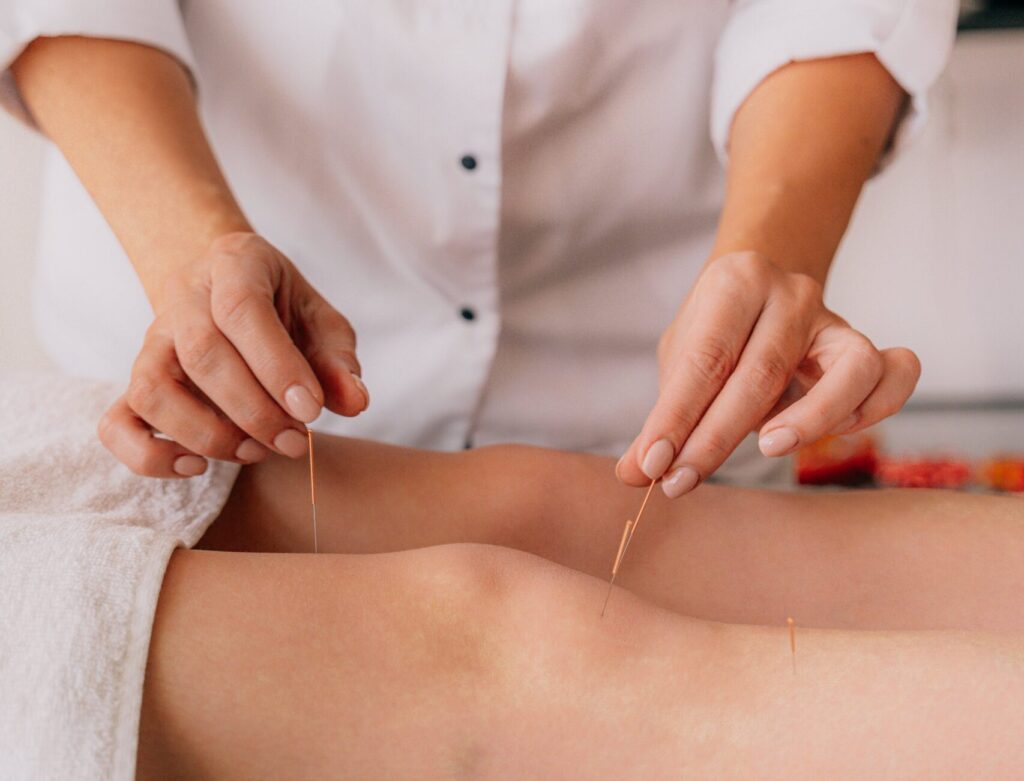Unlocking Holistic Wellness: The Power of Acupuncture
Unlocking Holistic Wellness: The Power of Acupuncture Introduction Acupuncture, originating from traditional Chinese medicine, involves the insertion of thin needles into specific points on the body. The technique is based on the concept of energy flow or “qi” through meridians. These meridians are pathways that correspond to different organs and bodily functions. Acupuncture is believed to restore the balance of energy, relieving pain and promoting overall health. 1. Understanding Chronic Pain Chronic pain is a complex and persistent condition that extends far beyond physical discomfort. It’s a multifaceted experience that influences every aspect of an individual’s life. While acute pain is a normal sensation triggered in response to an injury or tissue damage, chronic pain persists long after the injury has healed. This enduring pain can be the result of various factors, including: A. Underlying Conditions Chronic pain often arises from underlying health conditions such as arthritis, fibromyalgia, nerve damage, or past injuries. In some cases, the cause might not be apparent, leading to prolonged discomfort. B. Neurological Changes Prolonged pain can lead to alterations in the nervous system, increasing the sensitivity of pain receptors. This results in the amplification of pain signals, causing a heightened perception of pain even without any physical cause. C. Psychological Impact Chronic pain doesn’t just affect the body but can significantly impact mental health. It contributes to stress, anxiety, and depression, creating a cycle where emotional distress exacerbates physical pain, and vice versa. D. Quality of Life Impacts The relentless nature of chronic pain affects the ability to work, sleep, and engage in daily activities. Relationships, mood, and overall quality of life can suffer due to persistent discomfort. E. Individual Variations Pain perception varies greatly among individuals. What might be mildly uncomfortable for one person can be excruciating for another. This subjective nature of pain makes it a challenging condition to treat universally. The manifestation of chronic pain differs widely among individuals, making it imperative to understand its nuanced nature for effective management and relief strategies. Addressing chronic pain often involves a multifaceted approach that might include medication, physical therapy, lifestyle adjustments, and alternative therapies like acupuncture. Understanding the depth and complexity of chronic pain is crucial in appreciating the significance of interventions such as acupuncture in providing relief and promoting overall wellness. Acupuncture, as a holistic and natural approach, targets not only the physical pain but also aims to address the mental and emotional toll that chronic pain takes on an individual’s life. 2. How Acupuncture Works in Pain Relief Acupuncture operates on the principle that the body possesses an intricate network of meridians through which vital energy, known as “qi,” flows. When this energy flow is disrupted or blocked, it can result in pain and illness. The insertion of fine needles into specific acupuncture points along these meridians aims to restore the balance of qi, facilitating pain relief and promoting healing. A. Mechanism of Action B. Holistic Approach to Pain Relief Acupuncture doesn’t just focus on the site of pain; it addresses the whole body, aiming to rebalance energy flow and restore harmony within the body’s systems. Its holistic approach involves considering the interconnectedness of physical, mental, and emotional aspects, acknowledging that pain can often have multiple root causes. C. Tailored Treatment One of the remarkable aspects of acupuncture is its personalized approach. Qualified practitioners assess each patient’s condition and tailor the treatment plan according to their specific needs. Depending on the type of pain and its underlying causes, the acupuncturist targets specific acupuncture points to optimize pain relief and overall well-being. D. Complementary Therapy While acupuncture can stand alone as a therapy, it is often used in conjunction with other treatment modalities for more comprehensive pain management. It can complement conventional medical treatments, physiotherapy, or medication, providing a holistic approach towards pain relief and enhancing the effectiveness of the overall treatment plan. 3. Benefits of Acupuncture in Promoting Relaxation Acupuncture, beyond its renowned efficacy in pain relief, holds a profound capacity to induce a state of deep relaxation, offering a range of benefits that extend far beyond the treatment session itself. A. Stress Reduction The acupuncture process involves the strategic insertion of thin needles into specific points of the body, triggering the release of endorphins and neurotransmitters such as serotonin. These natural chemicals play a pivotal role in reducing stress and anxiety, promoting a sense of calm and relaxation. As a result, individuals often experience a significant decrease in stress levels, aiding in mental and emotional well-being. B. Nervous System Calming The stimulation of specific acupuncture points is believed to influence the autonomic nervous system, responsible for controlling involuntary bodily functions. By modulating the sympathetic and parasympathetic nervous systems, acupuncture helps in regulating heart rate, blood pressure, and overall stress response, leading to a more relaxed state. C. Improved Sleep Quality Many individuals who undergo acupuncture treatments report an improvement in sleep quality. As stress levels decrease and the body achieves a more balanced state, the ability to relax and fall asleep naturally improves. This is particularly beneficial for individuals experiencing sleep disturbances due to chronic pain or stress-related conditions. D. Emotional Balance Acupuncture’s impact on emotional health is notable. By promoting relaxation and reducing stress, it can help in managing mood disorders like anxiety and depression. The sense of overall well-being experienced after an acupuncture session can contribute significantly to emotional stability and resilience. E. Muscle Tension Relief Physical relaxation is another significant benefit of acupuncture. It helps in releasing muscle tension by increasing blood flow and circulation to targeted areas. Individuals often experience a profound sense of physical ease and comfort post-treatment. F. Holistic Wellness Approach Acupuncture embraces a holistic approach, considering the interconnectedness of the mind and body. By addressing both physical and emotional aspects, it supports overall wellness. The relaxed state achieved during and after acupuncture sessions contributes to a sense of balance and harmony within the body. 4. Acupuncture Points for Different Pain Conditions Acupuncture targets specific points along the body’s meridian pathways to address










